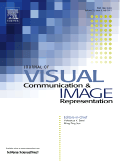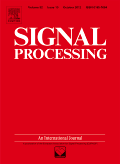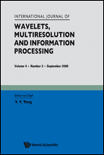
EURASIP Journal on Image and Video Processing
Scope & Guideline
Connecting Researchers with the Future of Imaging
Introduction
Aims and Scopes
- Image Processing Techniques:
The journal focuses on various image processing methodologies, including denoising, segmentation, and feature extraction, aimed at enhancing image quality and usability across different domains. - Video Processing and Analysis:
A core area of the journal is video processing, which encompasses compression, enhancement, and real-time analysis, addressing the challenges posed by modern video technologies. - Machine Learning and Deep Learning Applications:
The integration of machine learning and deep learning techniques in image and video processing is a significant focus, showcasing how these technologies can optimize various processes and improve outcomes. - Biometric and Forensic Applications:
Research related to biometric recognition and forensic analysis using image and video data is prominently featured, reflecting the growing importance of security and authentication in digital environments. - Multimodal and Multiscale Approaches:
The journal emphasizes multimodal and multiscale methodologies, exploring how different types of data and scales of analysis can be combined to achieve more comprehensive results. - Real-time and Embedded Systems:
There is a consistent focus on real-time processing and the development of embedded systems for image and video applications, highlighting the journal's relevance to practical and industrial applications.
Trending and Emerging
- Deep Learning for Image and Video Processing:
There is a significant increase in research applying deep learning methods for various tasks in image and video processing, including classification, detection, and enhancement, indicating a trend towards sophisticated computational techniques. - Explainability and Interpretability in AI:
Emerging themes focus on the explainability of AI models, particularly in biometric applications, emphasizing the need for transparency in automated systems and their decision-making processes. - Real-time and Edge Computing Solutions:
The trend towards real-time processing and edge computing solutions is gaining momentum, driven by the need for instantaneous analysis in applications such as surveillance and autonomous systems. - Multimodal Data Fusion:
Research exploring the integration of different data modalities (e.g., image, video, and sensor data) is on the rise, reflecting a holistic approach to processing and analysis that enhances accuracy and robustness. - Ethical and Privacy Considerations:
An increasing number of studies are addressing ethical concerns related to biometric data usage and privacy issues, highlighting the importance of responsible practices in image and video processing.
Declining or Waning
- Traditional Image Processing Techniques:
While foundational techniques remain important, there has been a noticeable decline in publications centered solely on traditional methods, as the field increasingly embraces advanced machine learning approaches. - Theoretical Studies without Practical Applications:
Papers focusing purely on theoretical aspects of image processing without practical implementation or application have decreased, as there is a growing demand for research that bridges the gap between theory and practice. - Basic Image Manipulation Techniques:
Research centered on basic image manipulation techniques, such as simple filtering or basic transformations, has seen reduced emphasis in favor of more complex and innovative approaches. - Static Image Analysis:
There is a marked decline in the frequency of studies dedicated solely to static image analysis, as dynamic and temporal aspects of image and video processing gain prominence. - Low-Resolution Image Processing:
Research focused on low-resolution image processing is becoming less frequent, as advancements in high-resolution imaging technologies and processing techniques take precedence.
Similar Journals

JOURNAL OF MATHEMATICAL IMAGING AND VISION
Innovating Insights in Imaging and Pattern RecognitionJOURNAL OF MATHEMATICAL IMAGING AND VISION, published by Springer, stands as a significant platform for advancing the fields of applied mathematics, computer vision, and pattern recognition, among others. With an ISSN of 0924-9907 and an E-ISSN of 1573-7683, this esteemed journal is based in the Netherlands and has been contributing to the scholarly discourse since its inception in 1992, with a converged focus through 2024. It has achieved reputable standings within several quartiles, including Q2 rankings across applied mathematics, geometry and topology, and condensed matter physics, reflecting its impact and relevance. Notably, the journal ranks within the top 5% in Geometry and Topology and maintains robust standings in Statistics and Probability. The JOURNAL OF MATHEMATICAL IMAGING AND VISION is dedicated to publishing high-quality research that bridges theoretical perspectives with practical applications, making it an essential resource for researchers, professionals, and students who are exploring the cutting-edge of mathematical imaging and its interdisciplinary applications.

Journal of Real-Time Image Processing
Unveiling Breakthroughs in Rapid Image Processing TechniquesJournal of Real-Time Image Processing, published by SPRINGER HEIDELBERG, is a renowned peer-reviewed journal dedicated to the field of real-time image processing. With an ISSN of 1861-8200 and an E-ISSN of 1861-8219, this journal operates under a rigorous academic framework, ensuring high-quality publications that cater to both theoretical and practical advancements in the discipline. Since its inception in 2006, it has continually evolved, maintaining a Q2 ranking in Information Systems according to the 2023 Category Quartiles. This journal ranks #103 out of 394 in Scopus for Computer Science - Information Systems, positioning it within the top 27% percentile, which underscores its significance in the research community. Its focus on the intersection of image processing and real-time applications makes it a vital resource for researchers, professionals, and students eager to explore and contribute to cutting-edge developments in the field. Though it does not currently offer open access, the journal's comprehensive scope and commitment to disseminating impactful research make it an essential platform for advancing knowledge in real-time image processing.

JOURNAL OF VISUAL COMMUNICATION AND IMAGE REPRESENTATION
Advancing Knowledge in Visual CommunicationJOURNAL OF VISUAL COMMUNICATION AND IMAGE REPRESENTATION, published by Academic Press Inc Elsevier Science, is an influential platform dedicated to the realms of visual communication, media technology, and advanced image representation. With a strong focus on interdisciplinary approaches, this journal aims to foster the exchange of innovative ideas among researchers and professionals in the fields of computer vision, image processing, and signal processing. Recognized for its significance, it boasts an impressive impact factor within its category quartiles; notably, it ranks Q2 in Computer Vision and Pattern Recognition and Electrical and Electronic Engineering, while achieving Q1 in Media Technology. Based in the United States, the journal not only provides valuable insights into the latest developments from 1990 to 2024 but also encourages cutting-edge research that enhances multimedia systems and user interactions. As a vital resource for students, researchers, and industry professionals alike, the journal ensures a robust understanding of visual information processing, critical for navigating today's digital landscape.

Signal Image and Video Processing
Connecting Theory with Practice in Signal ProcessingSignal Image and Video Processing, published by Springer London Ltd, is a cutting-edge academic journal dedicated to the fields of electrical and electronic engineering and signal processing. With an ISSN of 1863-1703 and an E-ISSN of 1863-1711, this journal plays a pivotal role in disseminating innovative research findings from 2007 to 2024, boasting a commendable Q2 ranking in its respective categories. Located in the United Kingdom, the journal attracts a diverse readership of researchers, professionals, and students eager to explore advancements in signal processing technologies and their applications in imaging and video analysis. Although it does not offer open access, its rigorous peer-review process ensures the publication of high-quality, impactful research, evident by its respectable rankings within Scopus in both electrical engineering and computer science domains. The journal serves as vital resource for those aiming to stay at the forefront of technological developments and research in image and video processing.

IMAGING SCIENCE JOURNAL
Unveiling the Future of Media Technology and VisionImaging Science Journal, published by Taylor & Francis Ltd, serves as a vital resource for researchers and professionals in the fields of computer vision, pattern recognition, and media technology. With an ISSN of 1368-2199 and an E-ISSN of 1743-131X, this journal has been fostering scholarly dialogue since its inception in 1997, with a converged content offering extending through 2024. Its categorization in Quartile 4 in Computer Vision and Pattern Recognition and Quartile 3 in Media Technology highlights its relevance and contributions to emerging trends in these domains. Although it ranks 36th in the Engineering - Media Technology category and 96th in Computer Science - Computer Vision and Pattern Recognition, its innovative research and insights continue to attract the attention of scholars dedicated to advancing knowledge at the intersection of imaging technologies. Offering versatile access options, this journal is essential for students, researchers, and professionals aiming to stay informed and engaged in the rapidly evolving landscape of imaging science.

SIGNAL PROCESSING
Empowering Innovation in Signal ProcessingSIGNAL PROCESSING is a premier academic journal published by Elsevier, dedicated to advancing the field of signal processing. With an impressive impact factor and ranked in the Q1 category across various disciplines such as Computer Vision and Pattern Recognition, Control and Systems Engineering, Electrical and Electronic Engineering, and more, the journal stands as a highly respected resource within the academic community. Since its inception in 1979, SIGNAL PROCESSING has provided a platform for researchers and professionals to disseminate their findings on innovative algorithms, techniques, and applications related to signal analysis and processing, making significant contributions to both theoretical and practical aspects of the discipline. The journal is accessible through institutional subscriptions, ensuring that scholars and students can engage with cutting-edge research and foster advancements in technology and methodology. Readers can expect to find a wealth of articles that promote critical discourse and facilitate further research, making SIGNAL PROCESSING an essential reference for anyone involved in the fields of signal processing and related areas.

International Journal of Applied Pattern Recognition
Illuminating the intricacies of data through rigorous analysis.International Journal of Applied Pattern Recognition, published by INDERSCIENCE ENTERPRISES LTD, is a leading peer-reviewed journal that delves into the intricate world of pattern recognition and its applications across various domains, including computer vision, machine learning, and data mining. With its ISSN 2049-887X and E-ISSN 2049-8888, the journal aims to foster academic dialogue and present cutting-edge research that bridges theory and practice. As a vital resource for researchers, professionals, and students in the field, the journal emphasizes innovative methodologies, practical implementations, and interdisciplinary collaborations. Although it does not follow an open access model, contributions to the journal are rigorously vetted to ensure the highest quality of published work. By focusing on real-world applications and advancements in pattern recognition, the International Journal of Applied Pattern Recognition stands out as a key publication that not only informs but also inspires significant progress in the field.

MULTIMEDIA SYSTEMS
Exploring the Frontiers of Multimedia InnovationMULTIMEDIA SYSTEMS, published by SPRINGER, is a premier academic journal dedicated to the dynamic field of multimedia technology and its applications across various domains. With the ISSN 0942-4962 and E-ISSN 1432-1882, this journal has established itself as an essential resource since its inception in 1993, providing researchers and professionals with rigorous peer-reviewed articles that explore innovative developments in Media Technology, Computer Networks, Hardware Architecture, Information Systems, and Software. As a testament to its academic impact, MULTIMEDIA SYSTEMS has attained a Q2 ranking in multiple key categories for 2023, alongside a notable Q1 ranking in Media Technology, highlighting its significance within the community. With a rich repository of knowledge and ongoing commitment to advancing multimedia research, this journal is an invaluable asset for those seeking to stay informed about cutting-edge technologies and methodologies. While the journal follows a traditional subscription model and is not presently open access, it ensures high-quality content that serves the scholarly needs of its audience, facilitated by its accessibility from Germany's respected academic infrastructures. For inquiries and submissions, the journal is based in New York, NY, further illustrating its global academic reach.

International Journal of Wavelets Multiresolution and Information Processing
Exploring the Frontiers of Wavelet Theory and Signal ProcessingWelcome to the International Journal of Wavelets, Multiresolution and Information Processing, a leading platform published by World Scientific Publishing Co. Pte Ltd that explores the intricate intersections of applied mathematics, signal processing, and information systems. Since its inception in 2006, this journal has provided a robust avenue for scholars and practitioners to disseminate innovative research and developments in wavelet theory and its multidisciplinary applications, providing valuable insights into complex problem-solving across various fields. With an impact factor that reflects its rigorous peer-review process and commitment to quality, the journal holds a commendable Q3 category ranking in Applied Mathematics, Information Systems, and Signal Processing as of 2023. The journal is housed in Singapore and serves a global audience, ensuring that groundbreaking research is accessible to all. Emphasizing open discourse and collaboration, the International Journal of Wavelets, Multiresolution and Information Processing is an essential resource for researchers, professionals, and students aiming to advance their understanding and practical use of wavelet and multiresolution techniques.

IEEE MULTIMEDIA
Pioneering research at the nexus of engineering and media.IEEE Multimedia, published by IEEE Computer Society, is a prestigious journal dedicated to advancing the fields of multimedia technology and innovations in computing. With an ISSN of 1070-986X and an E-ISSN of 1941-0166, the journal has established a significant impact within the academic community, holding an impressive ranking in various categories: Q2 in Computer Science Applications, Hardware and Architecture, Signal Processing; Q1 in Media Technology; and Q2 in Software as of 2023. Spanning from 1994 to 2024, IEEE Multimedia strives to publish cutting-edge research and development findings, focusing on the convergence of multimedia with engineering and computing disciplines. Researchers and professionals across these domains are encouraged to engage with its rigorously peer-reviewed content, enhancing their understanding and application of multimedia methodologies in their respective fields.